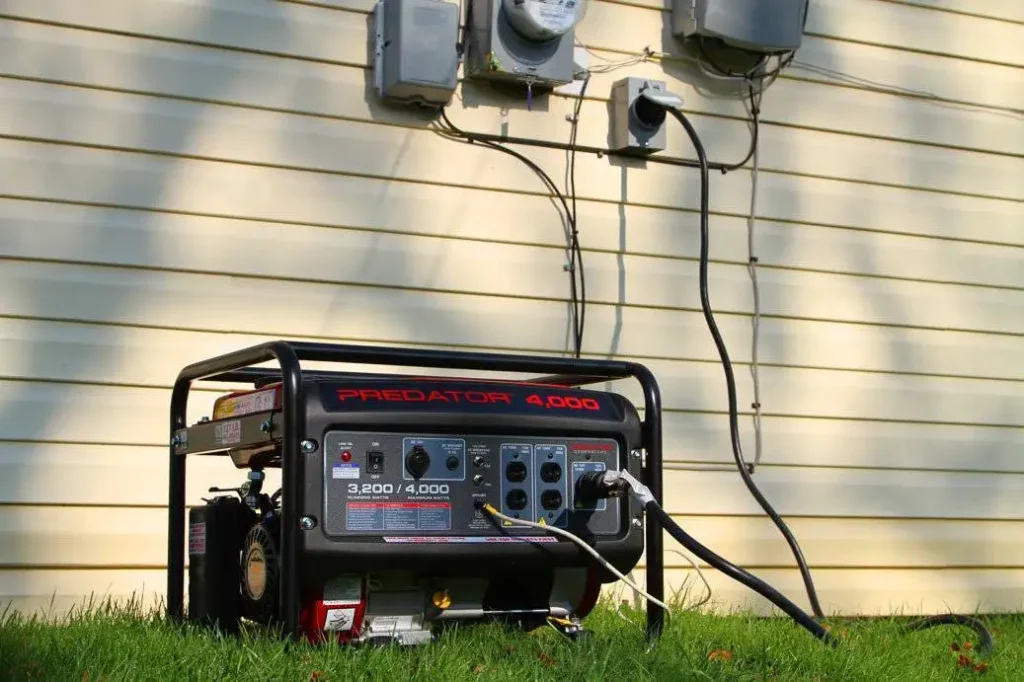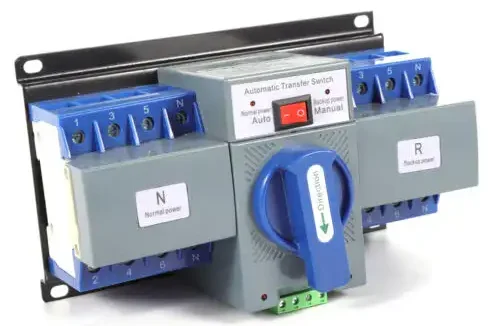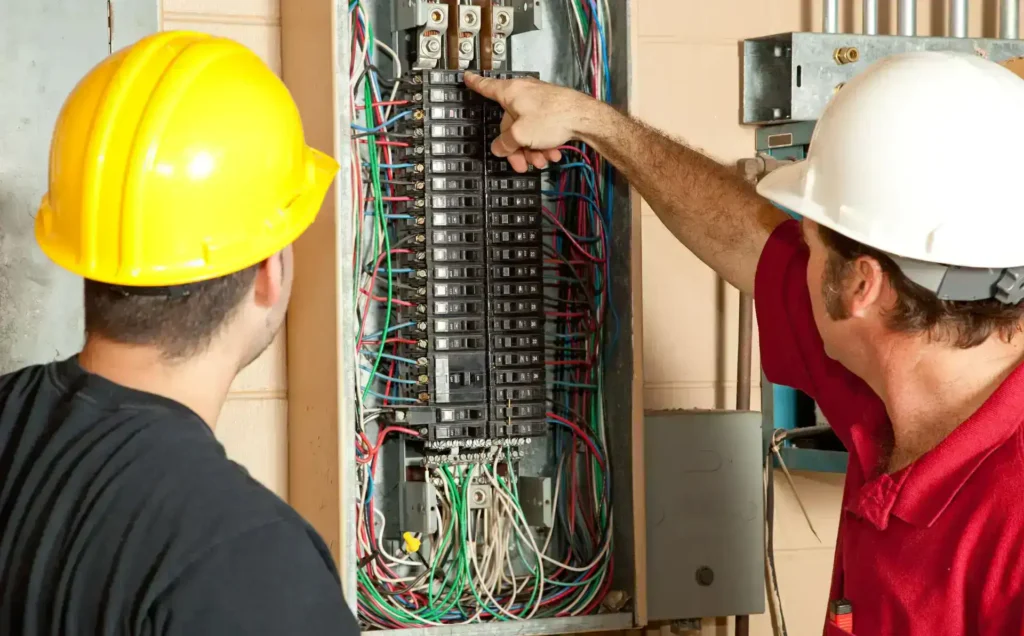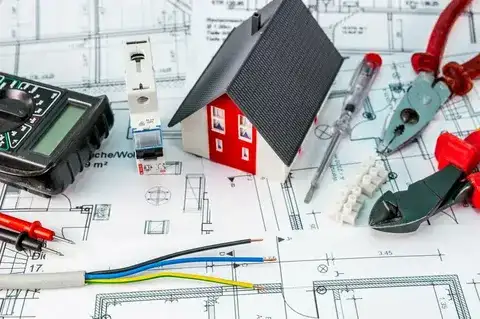The attachment is to directly connect the generator to the home electrical system. Then, when it is on, most of the power-consuming appliances can be run in a power outage. It has its drawbacks, though, and those include backfeeding hazards.
Otherwise, do you want to have power in your home during emergencies? Perhaps using a generator without a transfer switch might be the answer. However, is it safe to do so? Let’s delve into how it could work.

One can directly attach a generator to a house using extension cords or install interlocking kits. However, it can be quite dangerous if this process is not done correctly, so always follow the safety rules to ensure an electrical accident doesn’t occur.
What Is A Transfer Switch?

A transfer switch is a safety gadget that connects the generator to your home’s electric system. Through this, you can safely transfer between utility power and generator power. When electricity is cut, the transfer switch ensures that your home does not become a conduit for danger towards the power lines.
Without a transfer switch, there is a potential for backfeeding, which poses a danger both to people and utility workers. The transfer switch eliminates this by disconnecting the house from the grid when the generator is on. It is an essential part of a safe and efficient power supply during an outage.
Importance of Transfer Switch
A transfer switch is a device with which the power supply between two sources can be safely switched, usually from the primary grid to a backup generator. Its significance includes the following:
Safety: A transfer switch not only ensures that backfeeding is avoided when power from a generator is unintentionally sent back into the utility lines but also provides additional benefits, such as the generator being isolated from the grid while in use.
Convenience: It can switch the power supply automatically or manually, leaving no outage. In other words, it reduces the chances of any disruption and provides uninterrupted operation for critical devices or applications.
Efficiency: It allows the suppliers to distribute the power effectively, prevent overload conditions, and optimize the use of backup power supplied by a generator.
Compliance: Over and above being mandatory, in most cases, by law and building codes, the renewal of power services through the backup generator, particularly for homes, is carried out safely.
Protection of electrical equipment: The transfer switch guarantees that the house’s electrical system and the generator remain free of any damage brought about by the hazardous power transition.
It is the most significant device in linking safe electrical operations with reliability and uninterrupted operation during power outages.
How Does A Transfer Switch Work?
A transfer switch will connect your home to utility power or even to a generator; however, it cannot do both at the very same time. This thing has been done for the sake of safety, as the power’s reverse path from the generator back to the utility lines is a very risky and dangerous thing to do. This main breaker of the transfer switch controls the exchange of the two different power sources.
The transfer switch also has circuits that allow you to control which appliances or rooms receive power. This is useful in case your generator cannot power everything at once. For example, if you need to use the air conditioner, you can turn off other appliances and keep the AC on so the generator can bear the load.
Why You Need a Transfer Switch
Having a transfer switch is a must-use tool for safely utilizing a backup generator in your household. It helps you to switch between the power from your generator and the utility power when there is an outage. Without a transfer switch, there is a high chance that your home can remain connected to the power grid, resulting in dangerous situations for the generator and the utility workers.
Aside from the power that comes back on after an outage, there can be a sudden burst of power. A power surge of such magnitude is capable of ruining your electrical components and the generator. In this case, a transfer switch keeps your home secure by diverting the surge away from the generator and preventing it from degrading, hence ensuring its longevity.
Another reason you need a transfer switch is that it gives you the power to regulate which appliances have access to electricity. You can decide only to switch the significant ones, like lights and others. This would result in less load on your generator and help it to run longer.
Alternatives to Transfer Switches
1: Use Extension Cords
You can connect your generator to appliances using extension cords when the power goes out. All you need to do is connect one end of the extension cord to the generator and connect the other end to the appliance you want to power. It is a good option when you only want to keep some basic things running, such as lights or a fridge.
However, it has its cons. Extension cords cannot power all the appliances in your house. Too many extensions can cause overload, which might be hazardous. It may not have an even power flow and could damage some of your appliances. Always use heavy-duty cords, and don’t put them under rugs or in places that could damage them.
2: Use An Outlet Box
Another option is to connect your generator to your home through an outlet box. It connects to a special circuit in your main electrical panel and allows you to power specific appliances or rooms. This helps you control which devices get power without overloading the system.
An outlet box, like a transfer switch, must be installed by a licensed electrician to ensure it’s safe and can be used with your generator. It should also be located in a secure position, away from rain and the elements. That way, you’re only powering what you want and not simultaneously turning on too many appliances.
3: Use an Interlock Kit
An interlock kit is another good option for connecting a generator to your home’s electrical system. Unlike an outlet box, it lets you seamlessly switch between the generator and utility grid, preventing any risks of backfeeding. The kit is mounted directly to your electrical panel, making it easy to toggle between the two power sources.
Although not as effective as a transfer switch for powering the entire home, the interlock kit offers convenience for smaller setups. You can connect your generator to a breaker and use the kit to control when the power comes from the grid or the generator. Here are three interlock kits to consider:
- AC300 Home Integration Kit: This lets you connect your BLUETTI AC300 solar generator to your home’s electrical system. It requires two AC300 generators and four B300 expandable batteries. You can install it inside your home, but ensure a qualified technician does it.
- AC500 Home Integration Kit: Designed for the BLUETTI AC500 solar generator, this kit enables you to manage electricity distribution for different rooms and appliances. It requires two AC500 generators and two B300S expandable batteries for optimal performance.
- EP900/EP800 Home Integration Kit: If you’re using heavy-duty EP900 or EP800 solar generators, this kit is a great choice. It’s easy to install and lets you control power distribution by toggling seamlessly between the grid and the generator.
How to Connect an Interlocking Kit?
Turn the main power off: Don’t forget to put the main power from your utility grid to negate being shocked by electricity. Be prepared to get lost in this realm through this platform
Mount the Interlock: Kit to your electrical panel The interlock kit will hang directly from the electrical panel to switch between on and off the utility generator. One can’t use it in a system that can transfer power directly from a generator to the panel without the need to switch off the other if both of them are up and running.
Connect the Generator to the Breaker: Plug the generator’s power output to the electrical panel through a breaker slot that is set aside for it. You may switch on and control the generator through this particular circuit breaker, and you may make the change between the generator and the grid.
Connect Circuit for Appliances: You need to install different circuits in your electrical panel, and some would be for the appliances or areas you’d want to be powered in when there is a blackout.
Check the setup: Make sure everything is connected correctly after installation. Then turn on the generator and use the interlock to ferry between the generator and utility grid power.
Important: An interlock kit is a tool that a professional electrician should install to make sure that everything is correct the right way and able to meet the safety standards. This can present breakdowns because of faulty connectors and output and also may cause regulatory violations.
Final Words
You can use alternatives such as extension cords, an outlet box, or an interlock kit to connect a generator to your house without a transfer switch. Remember to observe safety precautions not to backfeed and utilize risky electrical connections. Use heavy-duty extension cords, have an outlet box installed properly by an experienced electrician, or use an interlock kit to switch safely between the generator and grid power. Remember, safety is paramount when connecting a generator directly to your home.
FAQS
Q1. What size generator do I need to run a house?
You want a generator ranging from 5,000 to 7,500 watts. This will be determined by your appliances.
Q2. Alternative to transfer switch
You could use an outlet box, extension cords, or an interlock kit. The above connects the generator to specified circuits.
Q3. Do I need a transfer switch with a generator?
A transfer switch is not necessary but safer, as it eliminates the generator and grid from powering simultaneously.
Q4. Which is the safest transfer method?
The safest one is through a transfer switch, as it prevents mixing the two powers from the generator and the grid.
Q5. Can I run a whole house on a small generator?
A small generator may only power basic appliances like lights and a refrigerator. Larger generators are needed for more appliances.


